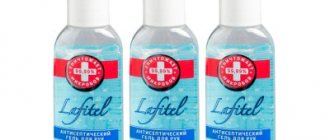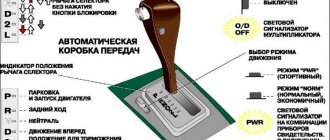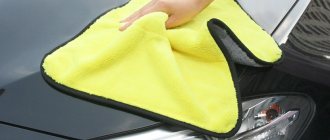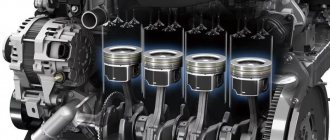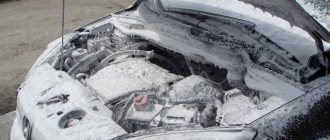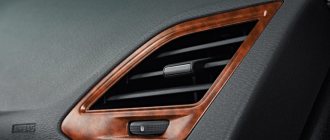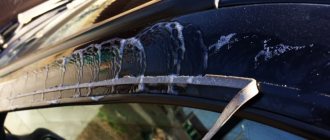The contactless washing procedure involves washing off surface dirt, applying foam twice and rinsing the car, followed by drying. However, modern contactless car wash equipment has another function - coating the body with a wax spray, which is applied after the car has dried. The wax is sprayed onto the surface of the body, turns into a thin film, and then rubbed by the skillful hands of washers. This procedure is said to not only help restore the original shine of the old body, but also protect the paint from new damage. How true are these statements?
What are the benefits of waxing a car body?
The main purpose of a wax coating is to improve the appearance of a car and create a special protective film on the surface of its body.
During this treatment, the wax particles heat up quite strongly, as a result of which they melt.
Thanks to this, wax is able to fill all microcracks in the paint layer. The surface is leveled.
In sunny weather, light rays are almost completely reflected from the car body, creating a spectacular mirror shine.
An important factor in the use of wax is body protection.
This is facilitated by the resulting water-repellent film.
You've probably noticed how, after waxing, water rolls off the surface of your car in tiny droplets.
This is precisely the result of the formation of a protective film. It protects the car body not only from harmful road chemicals, but also from exposure to ultraviolet radiation, as well as natural substances, such as resin.
It will be much easier to remove it from a waxed surface.
To be fair, let’s say that any other dirt is washed off much better.
Table of contents
- Why do you need to cover your car after washing?
- What coating options are there?
- Wax
- Teflon
- Ceramics
- What to choose
- Myths about body protection
- Useful tips
- conclusions
To make your car shine after washing, it is not enough to pay attention to cleaning it; it is advisable to treat the surface. This will keep the coating clean longer and will also reduce the negative impact of the environment on the paintwork. Let's see what is the best way to treat the car after the “washing procedures”.
Types of car wax
In total, there are 4 main types of wax used for bodywork.
This wax is diluted with hot water before application. The process of its application is quite complex.
The wax mass must be sprayed evenly over the entire surface of the car immediately after washing the car.
Next, it is given about five minutes to dry, after which the excess is removed with a soft polishing cloth or washed off with water.
The main advantages of this type of wax are the creation of a dense protective layer that provides protection even from corrosion.
The effectiveness of this wax treatment lasts for a very long time. The disadvantage is the labor-intensive application process.
This wax coating is applied by rubbing into the paint layer of the car.
This process is much easier. As a result, the body becomes mirror-shiny, however, the film formed with this method of wax application is less durable.
Applying hard wax is the most difficult of all other types of processing.
It should be used on a cleaned body surface, after which it must be additionally polished.
The resulting coating is extremely resistant to washing off, and its effect will be the longest lasting, up to 4 months.
Among the disadvantages, we highlight the duration of the application process.
This type of wax is the easiest to use. It is sprayed onto the surface of the car immediately after washing and rubbed with a soft suede or flannel cloth.
This creates a thin protective layer, giving the car a bright shine.
Unfortunately, this film is easily washed off. Usually the protection is enough for one or two washes, after which it is necessary to apply the wax coating again.
Let's sum it up
At the end of the article, we will say that coating the surface of a car body with wax must be carried out in conjunction with other preventive measures - washing, anti-corrosion treatment, polishing, etc.
It is the paint layer that suffers first when operating a car. The car owner’s task is to protect it as much as possible or at least minimize the destructive effects of harmful environmental factors.
The more the driver pays attention to this, the longer the car will maintain its original appearance, without the formation of microcracks in the paint layer and, as a result, without the formation of corrosion.
Reduced repair and diagnostic costs
If you rent a car, an inspection will be carried out at the end of the rental period. If the dealership checks the vehicle's condition and reports significant damage, such as scratches, paint issues, or discoloration, you will have to pay for the damage. Thus, waxing your car can help avoid costs.
For car owners, treatment may be one of the best ways to prevent serious damage. This will help you notice the problem and avoid damage to the paintwork.
Types of wax
Before talking about how to wash your car with wax at a self-service car wash, you should understand what this coating is. It is a fat-like substance that, when rubbed over the body, forms a thin protective film on its surface. The main classification divides these funds into the following types:
- a spray is a liquid mixture that is applied by spraying and has low stability (usually washed off after 1-2 washes);
- liquid wax has a thicker consistency and is rubbed over the surface of the body with a sponge, due to which it retains its protective properties for 4-5 washes;
- the hard coating is applied to a dry surface, this process is quite labor-intensive, but the protective film remains on the body for 3-4 months.
Car wash waxes can be organic (animal or plant), mineral or synthetic in origin. Artificial coatings are considered the most effective, since the film they form lasts on the surface of the car for six months. Another classification of such products is based on application technology:
- cold wax is an aqueous emulsion of a fat-like substance, applied with a sponge to the body and characterized by low stability;
- hot wax has a fat-like consistency, is mixed with hot water to be applied to the car and forms a durable coating, often containing corrosion inhibitors;
- foam wax is prepared by introducing air into a mixture of product and water, resulting in the formation of an emulsion with good adhesion to the body surface.
Tags
car wax after car. Wax is sprayed Wax really wax base helps Layer of wax protects wax coating leads wax films do not apply wax after Liquid wax is sold About cars rinsing car with car coating. refreshes car. on older cars protects car coating. paint coating. all wax coating half of the coating is washed off wax coating is necessary paint coating. Wax coating Wax coating is applied to create a protective film polishing protective film a special protective film. Double application of foam Its application is labor-intensive; a high-quality application is necessary; the application process is diluted before application.
application procedure is to repair read the site correctlynoscript
Wax application technology at a self-service car wash
Having understood the properties of this product, you can now consider how to properly apply wax at a self-service car wash. At such enterprises, clients can be offered all types of appropriate coatings, but the cost of the service depends on the choice of a specific one:
- Thus, car shampoos containing wax and sprays are the easiest to use, which explains their affordable price;
- liquid and solid coatings are more difficult to use and are also more expensive, so the prices for their application are several times higher than the previous option;
- The most expensive coating is synthetic wax; its use in self-service car washes is quite rare.
The technology of applying a wax coating to a car is quite simple, but several conditions must be met:
- the surface of the body must be clean, and when using hard wax, also dry;
- the procedure should not be carried out in the open sun, as its radiation prevents the formation of a uniform film on the body;
- before use, liquid wax or spray must be thoroughly shaken so that its particles are evenly distributed throughout the volume of the emulsion;
- The wax should be applied to a clean and dry surface, then polished over the entire area of the body with a soft cloth or sponge.
Many car owners ask whether it is necessary to wash off the wax after application? In no case, because this will deprive the body of your car of a protective layer that prevents minor scratches and aggressive environmental influences. The coating will gradually come off on its own after each wash, so over time you will have to repeat this procedure regularly.
Disadvantages of car waxing
The only disadvantage of applying wax to a car is the possibility of streaks and stains appearing after sloppy and careless work. However, it is especially worth noting that before starting this process, it is necessary to thoroughly clean the car yourself or at a trusted car wash to prevent the formation of dirt lumps during polishing.
If you are still undecided on how to apply a fat-like substance to protect your car, you can look below.
To summarize, we can draw the following conclusion: coating cars with lipid creates a reliable protective layer that pushes dirt out of existing microcracks, smoothes out unevenness and masks scratches. In addition, the hydrophobicity of liquid foundation repels water and dirt, as a result of which the surface of the machine remains clean for a longer period, and drying also takes less time. With proper care and timely waxing, a car can retain its original shine and shine for several years.
Functions of wax cleansers
Wax serves to protect the paintwork of a car from external factors. It forms a protective film that protects the car body from minor defects in the form of scratches and cracks. If the paint coating is damaged by the time of treatment, the wax covers small defects, preventing the penetration of water, salt and other chemically active substances into them, which, acting on unprotected metal, cause damage to it by corrosion, or eliminates them. In other words, wax can be considered as an additional measure to protect your car from rust. In addition, it provides protection from ultraviolet rays.
In addition, wax somewhat improves the appearance, giving the paintwork more shine. By allowing water to drain quickly from the machine, it eliminates the possibility of stains forming as drops dry. Thanks to this, this coating greatly simplifies body cleaning and increases the interval between washes.
Rubbing with rags
Liquid wax is sold in bottles and canisters. It is a composition that, in addition to emulsion artificial wax, also contains cationic active substances that have anti-corrosion, bactericidal and preservative properties. They protect the body from oxidation under the influence of external factors: moisture and biological active substances, such as bird droppings.
Liquid wax is applied by hand over the varnish, followed by rubbing with pieces of cloth, as when polishing. The chemical first spreads in the form of jelly over the body and fills microcracks and scratches, and subsequent grinding and drying helps create a protective film about a dozen microns thick. It lasts for about a month and can resist not only dust and dirt, but also frequent rain. It should be remembered that after two or three visits to the car wash, the wax coating must be reapplied, because the chemical foam quickly washes it off.
Types of wax
There are three classifications of car wax.
One of them is based on the properties of the substance. In accordance with it, the following types of wax are distinguished:
- in the form of a spray;
- liquid;
- solid;
- synthetic.
Spray is considered the least attractive option. This is due to its low stability. This wax is washed off from the car body in a couple of washes. Therefore, this coating will have to be applied very often, although this process is simple.
Liquid wax is more stable compared to the type discussed above. The technology for treating a car with it consists of applying the substance to a washed body and rubbing it.
Hard wax differs from the described types in that it is applied to a dry surface. The process of creating such a coating takes a lot of time. At the same time, it is quite stable and lasts 3-4 months.
Synthetic wax is the most stable, and this coating lasts up to six months. Moreover, it is easy to apply, as it is presented in liquid form. This substance is also included in some car shampoos.
Another classification of car wax is based on application technology. It includes the following types:
- cold;
- hot;
- foamy.
Cold wax is a liquid containing large quantities of cationic surfactants and emulsion wax. Application of such coatings is carried out manually. The disadvantage of this material is its low durability. To maintain the effect, repeat the coating process after each wash.
Hot wax is a fat-like substance of artificial or natural origin. Its melting point is about 90ºС. Carnauba wax is considered one of the highest quality waxes. This is explained by the fact that it is completely transparent, has a high melting point and is highly resistant to wear. This material retains its properties for six months to a year. Many substances of this type contain corrosion inhibitors.
The technology for applying hot wax consists of diluting it with hot water and polishing with a sponge or cloth. The disadvantage is the high cost.
Foam wax is similar in properties to hot wax, but the difference lies in the application technology. The creation of the coating in question cannot be done manually, since this process involves the use of special equipment. It is necessary to create a foam emulsion by introducing air into a mixture of wax and water. The use of such complex technology is justified by the high degree of adhesion of the foam emulsion to the working surface and its uniform polishing.
Another classification of waxes is based on origin. According to this criterion, the materials under consideration are divided into the following varieties:
- synthetic;
- mineral;
- animals (bees);
- vegetable (carnauba).
Peculiarities
You should choose wax taking into account the cost, since inexpensive options quickly lose their original properties.
New cars under 5 years of age are usually treated with solid and liquid materials. For older cars, abrasive waxes and polishes are used. The difference between wax and polish is that the first material creates an additional protective layer on the surface of the body, while polish improves the external properties by removing the top layer of paintwork. Wax containing abrasives has the same principle of action as polish. Therefore, when choosing wax for your car, you need to take this parameter into account. Abrasive options should be used for cars that have any paint defects, for example, in the form of scratches or faded paint. It must be taken into account that abrasive components vary in degree of hardness. The hardest options resemble grains of sand in appearance and feel.
For new cars that do not have paint defects, wax options that do not contain any abrasive components should be used.
Application
As mentioned, it is possible to apply all types of wax by hand, with the exception of foam. In any case, before creating the coating, it is necessary to clean the body of dirt by washing. Washing should be done using a non-contact method.
Waxing should not be done in the sun. You must first shake the composition thoroughly. Self-treatment of a car with liquid wax consists of applying it to a body surface that has not dried after washing and rubbing it with a napkin or rag.
It should be noted that liquid wax is often included in the cost of washing or is offered as an additional service at a low cost. However, the feasibility of using this material is questionable, since this service increases the cost of washing, and in order to maintain the effect it is necessary to repeat this operation every time. This explains the low cost of washing a car with this wax, which is 1-2 dollars.
Hard wax car body treatments at car washes range from $12 to $250. This difference in cost compared to liquid wax is explained by more complex application technology. In addition, the materials have a high cost, which can reach $500 per jar of hard wax.
It should be noted that liquid wax and spray versions are much more widespread compared to hard and synthetic wax. This is explained, first of all, by the high cost of applying the latter to the car body. Naturally, such wax is not intended for general use. It is usually used for expensive cars to protect them from damage to the paintwork. Treating cars with such wax on your own is also rarely used, due to the complexity of this process. Washing your car with car shampoo containing wax or applying liquid material is naturally much easier.
Criterias of choice
The following factors are taken into account:
- view;
- price;
- color.
It is advisable to use hard wax if the car rarely goes to the car wash. For frequent visits, it is better to use liquid. Hot products and shampoos are used by those who wash the vehicle themselves.
Read also: What are stories on Instagram
The choice between natural and synthetic products is made based on one’s own financial capabilities. The means can be combined. For example, before selling a vehicle, it is washed with shampoo and wax, then rubbed with carnauba paste. It is useful to apply a liquid product after each wash on top of a solid one to extend its life.
The choice also depends on what color the body is painted.
Recommendations
Below are some tips on how to wash your car.
- Wash with warm water mixed with shampoo in one container and plain water in the other.
- You need to wash in one direction - from top to bottom.
- To increase the efficiency of cleaning the car body during the washing process, you should wash it with a sheepskin glove, as it is a more effective cleaning tool compared to the various sponges usually used for this purpose.
- It is advisable to wash the body and wheels with different sponges.
- It is not advisable to wash your car with products based on silicone, as well as those containing alkalis or acids.
